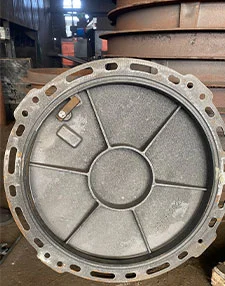Choosing the Right Nails for Pressure-Treated Wood Projects
Understanding the Best Nails for Treated Wood
When embarking on a project involving treated wood, be it a deck, fence, or any outdoor structure, choosing the right nails is crucial for ensuring the longevity and durability of your build. Treated wood is designed to resist decay and insect damage, but using the wrong fasteners can lead to problems such as corrosion, structural failure, or unsightly staining. This article will guide you through the essential factors to consider when selecting nails for treated wood projects.
What is Treated Wood?
Treated wood refers to lumber that has been infused with chemical preservatives to protect it from moisture, decay, and pests. Common treatments include pressure treating with chemicals like alkaline copper quaternary (ACQ) or copper azole (CA). While these treatments significantly extend the lifespan of wood, they can also interact negatively with certain metals, making it necessary to choose compatible fasteners.
Types of Nails for Treated Wood
1. Galvanized Nails Galvanization is a process where steel nails are coated with a layer of zinc. This coating helps prevent rust and corrosion, making galvanized nails a popular choice for treated wood. However, it's important to ensure that they are hot-dipped galvanized, as this method provides a thicker coating compared to electro-galvanized nails. The thicker covering offers better protection against the corrosive chemicals found in treated wood.
2. Stainless Steel Nails For premium durability, stainless steel nails are an excellent option. They are highly resistant to rust, making them suitable for harsh outdoor environments. While they are generally more expensive than galvanized options, their longevity can make them a cost-effective choice over time, especially for structures exposed to moisture.
3. Coated Nails Some manufacturers offer coated nails specifically designed to resist corrosion in treated wood. These coatings can be polymer-based or resin-based and provide an additional layer of protection against moisture. It's crucial to ensure that the coating is compatible with the wood treatment, as some coatings can break down when exposed to the chemicals in treated wood.
Considerations when Choosing Nails
nails for treated wood

- Environmental Exposure Assess the project’s exposure to weather. For structures that will be in direct contact with moisture or soil, like fence posts or deck supports, choosing stainless steel or hot-dipped galvanized nails is advisable.
- Nail Size The size of the nail is also important. Typically, 2.5 to 3.5-inch nails are used for framing and structural work, while shorter nails are appropriate for securing decking boards. Using the right length ensures adequate holding power and prevents splitting.
- Nail Type There are various types of nails, including common, finishing, and duplex nails. Common nails are ideal for structural connections, while finishing nails are used for trim work. Duplex nails, which have two heads, are useful for temporary arrays or when you might need to remove them later.
- Avoiding Chemical Reactions Certain fasteners can react with the preservatives in treated wood, leading to accelerated corrosion. For example, traditional galvanized nails may not perform well with ACQ-treated wood. Always check the manufacturer's recommendations specific to your type of treated wood.
Installation Tips
When installing nails into treated wood, consider pre-drilling holes, especially for larger gauge nails, to minimize the risk of splitting. Additionally, leave a small gap between the nail head and the surface of the wood to allow for expansion and contraction due to temperature and moisture changes.
Conclusion
Selecting the appropriate nails for treated wood projects is essential in ensuring the durability and overall success of your build. By considering nail material, size, and type, along with understanding the environmental factors involved, you can make informed choices that will stand the test of time. Whether you opt for galvanized, stainless steel, or coated nails, ensuring compatibility with the specific wood treatment will help you create a sturdy, lasting structure that will serve its purpose for years to come. Make your choice wisely, and your outdoor projects will not only look great but will also endure the elements.
-
Weather Resistance of Woven Wire and Chicken Wire Fencing MaterialsNewsJun.05,2025
-
Umbrella Nails Innovations in Roofing Fasteners for Wind ResistanceNewsJun.05,2025
-
Modern Barbed Wire Fence Designs for Perimeter ProtectionNewsJun.05,2025
-
How Iron Nail Wire Enhances Nail Strength and Installation EfficiencyNewsJun.05,2025
-
High-Security Razor Fence Solutions for Perimeter ProtectionNewsJun.05,2025
-
Durable Wire Netting Fence Solutions for Animal EnclosuresNewsJun.05,2025




